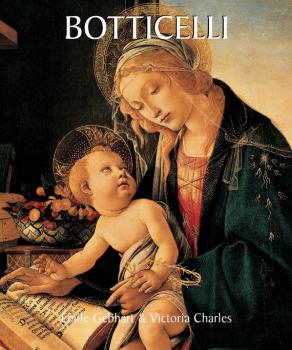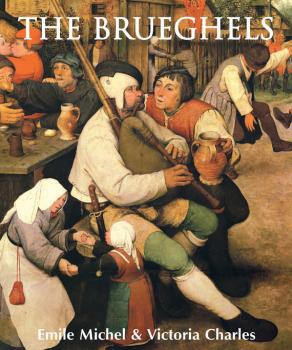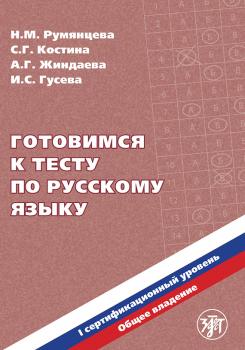Иностранные языки
Различные книги в жанре Иностранные языкиArt of War
Over the course of history, many wars have changed the political and cultural landscape of our world. While these events are defined by their upheaval and violence, they frequently contribute to the formation of the identity of entire generations or groups of people, and thus have significant cultural effects. Despite the physical and emotional destruction that occurs during these turbulent periods, they have inspired prolific artistic creation. In the wake of traumatic events over the centuries, a myriad of artists have produced works that immortalise the most dramatic moments of these wars in order to establish them in history forever. This book presents beautiful images depicting famous battles and war scenes, accompanied by the iconic text of the legendary Chinese military strategist Sun Tzu, as well as texts documenting notable moments of different wars, each written by well-known writers. From Uccello’s The Battle of San Romano to Picasso’s Guernica, this work offers a captivating look at artworks inspired by war and what they reveal about humanity’s history.
Botticelli
He was the son of a citizen in comfortable circumstances, and had been, in Vasari’s words, “instructed in all such things as children are usually taught before they choose a calling.” However, he refused to give his attention to reading, writing and accounts, continues Vasari, so that his father, despairing of his ever becoming a scholar, apprenticed him to the goldsmith Botticello: whence came the name by which the world remembers him. However, Sandro, a stubborn-featured youth with large, quietly searching eyes and a shock of yellow hair – he has left a portrait of himself on the right-hand side of his picture of the Adoration of the Magi – would also become a painter, and to that end was placed with the Carmelite monk Fra Filippo Lippi. But he was a realist, as the artists of his day had become, satisfied with the joy and skill of painting, and with the study of the beauty and character of the human subject instead of religious themes. Botticelli made rapid progress, loved his master, and later on extended his love to his master’s son, Filippino Lippi, and taught him to paint, but the master’s realism scarcely touched Lippi, for Botticelli was a dreamer and a poet. Botticelli is a painter not of facts, but of ideas, and his pictures are not so much a representation of certain objects as a pattern of forms. Nor is his colouring rich and lifelike; it is subordinated to form, and often rather a tinting than actual colour. In fact, he was interested in the abstract possibilities of his art rather than in the concrete. For example, his compositions, as has just been said, are a pattern of forms; his figures do not actually occupy well-defined places in a well-defined area of space; they do not attract us by their suggestion of bulk, but as shapes of form, suggesting rather a flat pattern of decoration. Accordingly, the lines which enclose the figures are chosen with the primary intention of being decorative. It has been said that Botticelli, “though one of the worst anatomists, was one of the greatest draughtsmen of the Renaissance.” As an example of false anatomy we may notice the impossible way in which the Madonna’s head is attached to the neck, and other instances of faulty articulation and incorrect form of limbs may be found in Botticelli’s pictures. Yet he is recognised as one of the greatest draughtsmen: he gave to ‘line’ not only intrinsic beauty, but also significance. In mathematical language, he resolved the movement of the figure into its factors, its simplest forms of expression, and then combined these various forms into a pattern which, by its rhythmical and harmonious lines, produces an effect upon our imagination, corresponding to the sentiments of grave and tender poetry that filled the artist himself. This power of making every line count in both significance and beauty distinguishes the great master-draughtsmen from the vast majority of artists who used line mainly as a necessary means of representing concrete objects.
The Brueghels
Pieter Brueghel was the first important member of a family of artists who were active for four generations. Firstly a drawer before becoming a painter later, he painted religious themes, such as Babel Tower, with very bright colours. Influenced by Hieronymus Bosch, he painted large, complex scenes of peasant life and scripture or spiritual allegories, often with crowds of subjects performing a variety of acts, yet his scenes are unified with an informal integrity and often with wit. In his work, he brought a new humanising spirit. Befriending the Humanists, Brueghel composed true philosophical landscapes in the heart of which man accepts passively his fate, caught in the track of time.
Diego Rivera
They met in 1928, Frida Kahlo was then 21 years old and Diego Rivera was twice her age. He was already an international reference, she only aspired to become one. An intense artistic creation, along with pain and suffering, was generated by this tormented union, in particular for Frida. Constantly in the shadow of her husband, bearing his unfaithfulness and her jealousy, Frida exorcised the pain on canvas, and won progressively the public’s interest. On both continents, America and Europe, these commited artists proclaimed their freedom and left behind them the traces of their exceptional talent. In this book, Gerry Souter brings together both biographies and underlines with passion the link which existed between the two greatest Mexican artists of the twentieth century.
American Realism
Urban realism, snow-covered streets of New York, boxing matches, children on the banks of a river, the painters of the Ash Can School preferred realistic images. Their paintings are a true hymn to noise and sensations. This unconventional movement enabled the birth of a true national artistic identity which broke free from the establishment. The Ash Can School resolutely promoted the affirmation of the modernist current of American art. Edward Hopper, who was a student of Robert Henri, embraced the principles of this movement and brought them to another level.
Womb Bloom
In this book I share ancient knowledge on pregnancy and childbirth, techniques and exercises which I learned from my teachers, healers, wise women. I describe week by week how the body and inner world of a woman change, how energy flows between her and baby and how the relationship between partners changes. The book will also be of interest to men since it contains exercises for couples, techniques for sex and conception.
Готовимся к тесту по русскому языку. Первый сертификационный уровень. Общее владение
Книга «Готовимся к тесту по русскому языку. Первый сертификационный уровень. Общее владение» адресована всем, кто, изучая русский язык, прошёл программу Первого сертификационного уровня и хочет подготовиться к тестированию, чтобы получить государственный Сертификат первого уровня. Эта книга будет также полезна всем тем, кто хочет самостоятельно проверить свой уровень владения русским языком. (CD прилагается только к печатному изданию.)
Живём и учимся в России. Учебное пособие по русскому языку для иностранных учащихся (I уровень)
Учебный комплекс предназначен для иностранных учащихся, владеющих русским языком в объеме базового уровня, для работы на этапе предвузовской подготовки, на курсах и в кружках. Готовит к экзамену на сертификат 1 уровня. Имеется рабочая тетрадь и аудиоприложение. (CD прилагается только к печатному изданию.)
Дневник фокса Микки
Адаптированный текст повести известного русского писателя начала XX века Саши Чёрного предназначен для иностранцев, владеющих русским языком на уровне В1 (2300 слов). Книгу можно использовать при самостоятельной работе или во время занятий с преподавателем. Книга также может служить в качестве рабочей тетради. Ударения, иллюстрации, задания.
Контакты. Учебник русского языка для школьников. Третий иностранный язык
Учебник «Контакты» предназначен для обучения русскому языку как третьему иностранному при первом английском учащихся старших классов гимназий и студентов университетов. При его разработке авторы ориентировались на возрастные когнитивные особенности учащихся 15-18 лет. Учебник учитывает рекомендации «Общеевропейских компетенций в изучении иностранных языков» по формированию ограниченной коммуникативной компетенции на уровне А2. Большое внимание уделяется страноведению России и развитию общеучебных компетенций на русском языке. Аудиоприложение см. на сайте издательства www.zlat.spb.ru, в разделе «Учебники».









